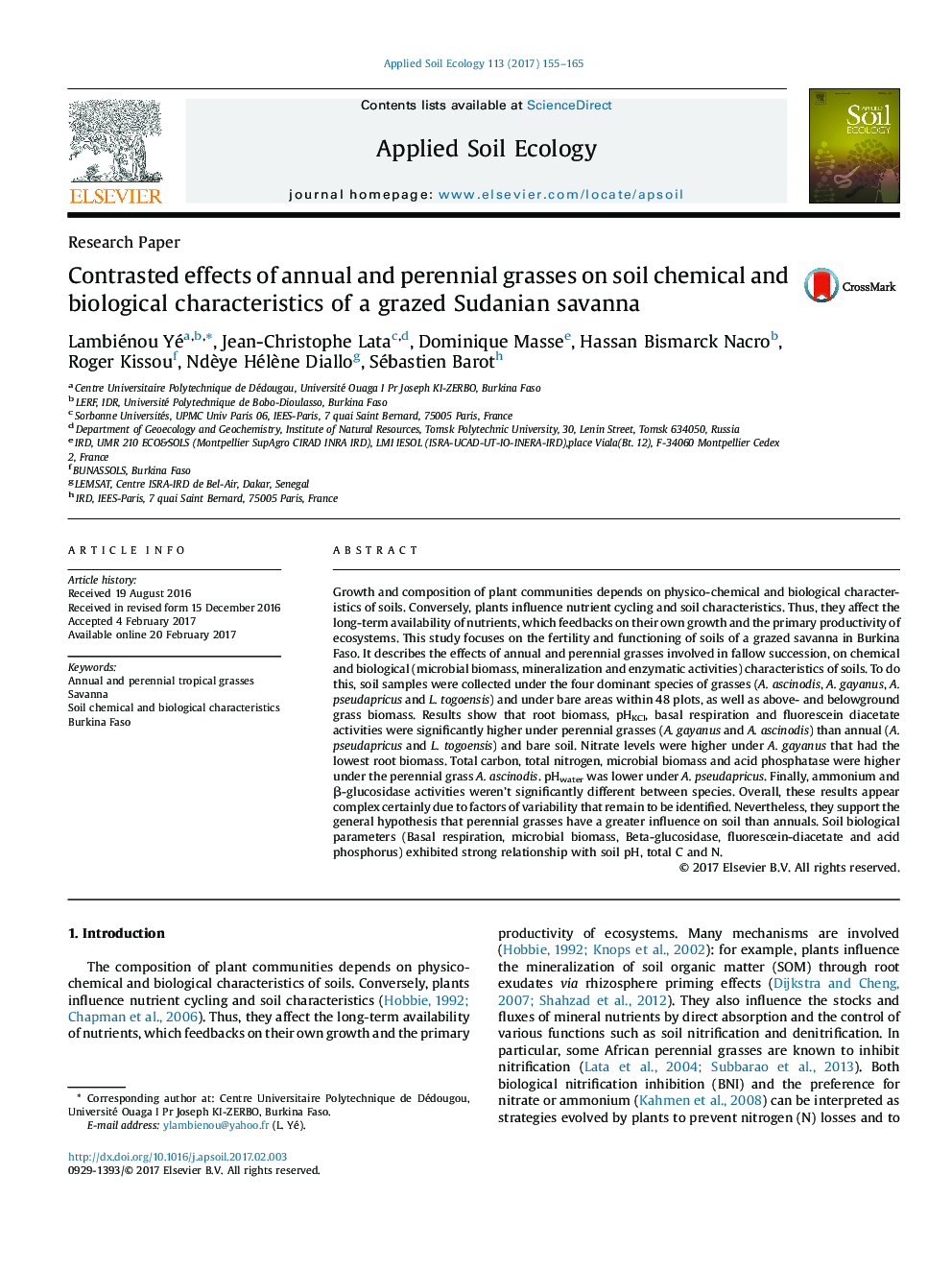| کد مقاله | کد نشریه | سال انتشار | مقاله انگلیسی | نسخه تمام متن |
|---|---|---|---|---|
| 5742746 | 1617770 | 2017 | 11 صفحه PDF | دانلود رایگان |
- Annual and perennial grass effects on soil characteristics were studied.
- Perennial grasses have a greater influence on soil characteristics than annuals.
- However, we find that the two perennial grasses have different influences.
- Soil biological parameters exhibited strong relationship with soil pH, C and N.
Growth and composition of plant communities depends on physico-chemical and biological characteristics of soils. Conversely, plants influence nutrient cycling and soil characteristics. Thus, they affect the long-term availability of nutrients, which feedbacks on their own growth and the primary productivity of ecosystems. This study focuses on the fertility and functioning of soils of a grazed savanna in Burkina Faso. It describes the effects of annual and perennial grasses involved in fallow succession, on chemical and biological (microbial biomass, mineralization and enzymatic activities) characteristics of soils. To do this, soil samples were collected under the four dominant species of grasses (A. ascinodis, A. gayanus, A. pseudapricus and L. togoensis) and under bare areas within 48 plots, as well as above- and belowground grass biomass. Results show that root biomass, pHKCl, basal respiration and fluorescein diacetate activities were significantly higher under perennial grasses (A. gayanus and A. ascinodis) than annual (A. pseudapricus and L. togoensis) and bare soil. Nitrate levels were higher under A. gayanus that had the lowest root biomass. Total carbon, total nitrogen, microbial biomass and acid phosphatase were higher under the perennial grass A. ascinodis. pHwater was lower under A. pseudapricus. Finally, ammonium and β-glucosidase activities weren't significantly different between species. Overall, these results appear complex certainly due to factors of variability that remain to be identified. Nevertheless, they support the general hypothesis that perennial grasses have a greater influence on soil than annuals. Soil biological parameters (Basal respiration, microbial biomass, Beta-glucosidase, fluorescein-diacetate and acid phosphorus) exhibited strong relationship with soil pH, total C and N.
Journal: Applied Soil Ecology - Volume 113, May 2017, Pages 155-165
